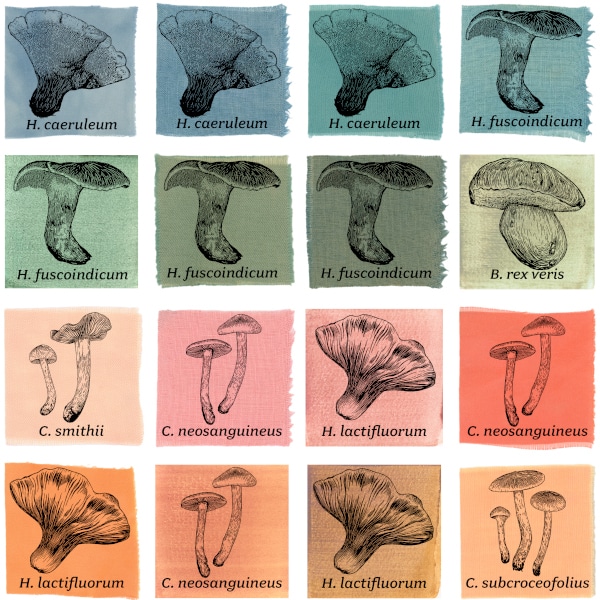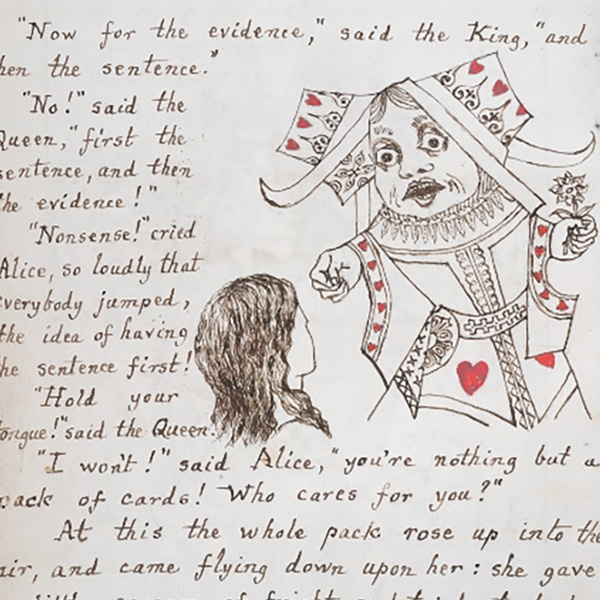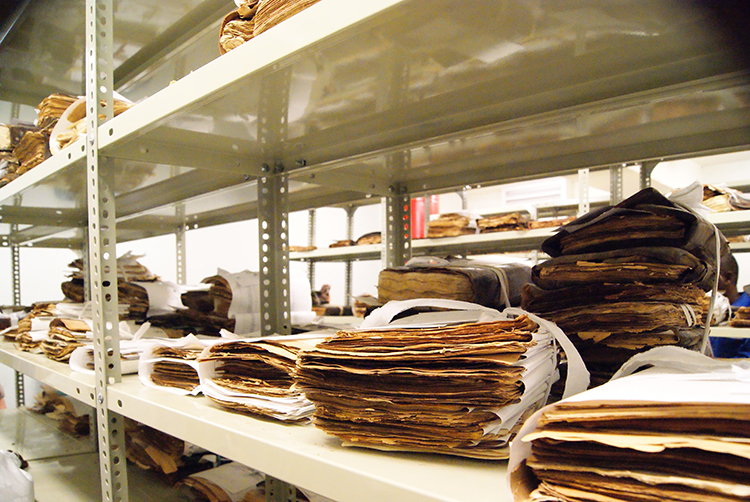
Manuscripts at the Ahmed Baba Centre, Timbuktu, in 2013. (Photo: UNESCO via Wikimedia Commons, CC BY-SA 3.0 IGO)
This post may contain affiliate links. If you make a purchase, My Modern Met may earn an affiliate commission. Please read our disclosure for more info.
The fabled ancient city of Timbuktu, Mali, is a center of great learning. The permanent settlement of the city dates back to the 12th century when important caravan trade routes crisscrossed the Sahara and northern Africa. Beginning with the Mali Empire's rule of the city in the 14th century, it flourished in a Golden Age of early Islamic intellectualism. The thousands of texts produced during and after this period comprise the renowned manuscripts of Timbuktu. When the collections were endangered in the summer of 2012, a librarian named Abdel Kader Haidara mobilized to save the city's literary legacy.
The manuscripts of Timbuktu may number up to 700,000. These precious texts include early Qurans and topics including astronomy and math. For generations, they were held by private families who passed them down to succeeding generations. Among the librarians with a long family history of safeguarding books is Haidara. Haidara's rich private collection was housed in his Mamma Haidara Commemorative Library. Haidara told The Wall Street Journal in 2016, “Many of the manuscripts show that Islam is a religion of tolerance.”
In 2012, the invasion of northern Mali by the militant fundamentalist group al Qaeda in the Islamic Maghreb (AQIM) caused an unprecedented threat to the city, including the precious manuscripts. Despite the Islamic origin of many of the books, the fundamentalist group (like other extremists groups such as the Taliban) were known for destroying historic artifacts which contradicted their strict views. Soon after the conquest of the city, Haidara and his nephew, Touré, set forth a plan in response to their rising fear for the collections.
They set out looking for metal trunks, buying as many as they could. These trunks were packed with thousands of books from the private collections and libraries around the city. Trusted volunteers worked in secret, and often in the dark, to pack volume after volume of precious, delicate paper. These trunks were then given to sympathetic homeowners to be hidden. Eventually, Haidara himself had to leave Timbuktu for the city of Bamako. From there, he courted financial aid from NGOs and convinced UNESCO to remain quiet, worried their statements on the dangers to the manuscripts might actually endanger the books further.
In a massive community effort, the trunks full of books were removed from the city over the following months. Trunk after trunk was driven to Bamako. Those transporting the books often faced checkpoints full of soldiers and even arrest. Despite these threats, by early 2013, 350,000 volumes had been safely relocated out of Timbuktu. Haidara and the other rescuers had saved hundreds of years of Islamic and African history through their efforts.
Threatened by the French forces approaching, AQIM militants burned 4,200 manuscripts remaining in the Ahmed Baba Institute's library before being forced from the city. Thankfully, the volumes removed to Bamako survived to be returned to the liberated city at a later date. Today, thanks to Haidara and his community's heroic efforts, Timbuktu retains one of the most renowned collections of manuscripts in the world. Ongoing efforts to preserve, catalog, and digitize the collections ensure that these precious works will continue to be enjoyed by future generations.
To learn more about this amazing story, check out Joshua Hammer's fascinating The Bad-Ass Librarians of Timbuktu.
A librarian from Timbuktu, Mali, orchestrated a covert operation lasting nine months to save the precious manuscripts of his city from al Qaeda extremists.
View this post on Instagram
The 350,000 manuscripts were smuggled to safety in metal chests past military checkpoints.
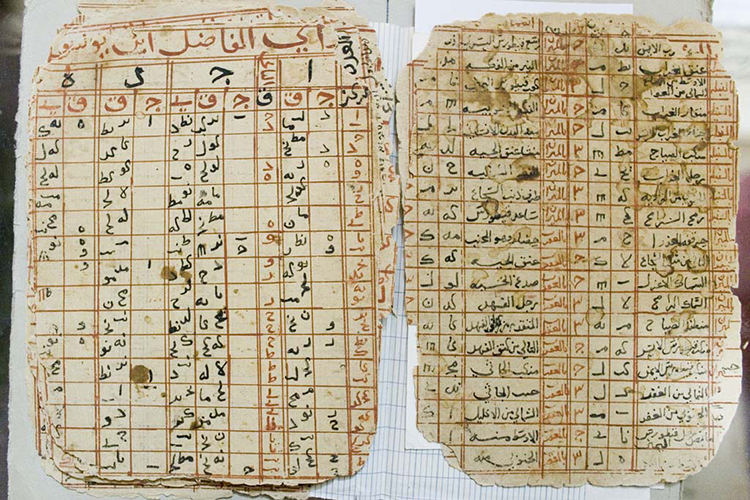
Astronomy tables in a Timbuktu manuscript. (Photo: Wikimedia Commons, Public domain)
The manuscripts preserve the history of Africa, early Islam, and the trade networks of northern and Saharan Africa.
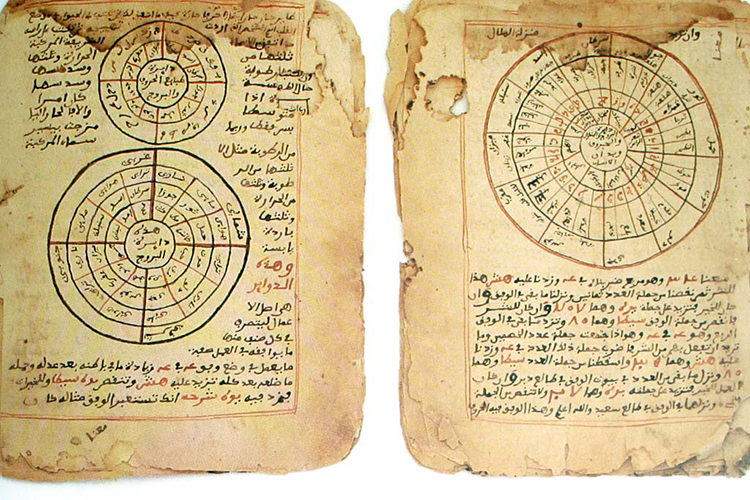
Astronomy and math text. (Photo: Wikimedia Commons, Public domain)
Thanks to Abdel Kader Haidara and his fellow citizens of Timbuktu, the manuscripts are preserved for future generations.

Sankoré Madrasah, part of the University of Timbuktu, in Mali. (Photo: Anne and David via Wikimedia Commons, CC BY-SA 4.0)
Related Articles:
Ancient Saudi Arabian City of Hegra Opens To Public After 2,000 Years
What is the Great Sphinx? Discover the History Behind the Ancient Egyptian Monument
4,000-Year-Old Ancient Egyptian Writing Board Shows Student’s Spelling Mistakes

















































































